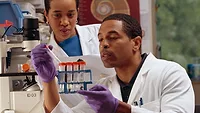USDA-FSIS to Update Laboratory Analysis Methods for Certain Chemical Residues in Foods

Image credit: xbqs42 via Pixabay
The U.S. Department of Agriculture’s Food Safety and Inspection Service (USDA’s FSIS) is updating the methods it uses to analyze samples of FSIS-regulated products for certain chemical residues, which will be posted in the Chemical Laboratory Guidebook.
For avermectins, FSIS’ current screening and quantitation method (Quantitation of Doramectin, Ivermectin, and Moxidectin by UHPLC; CLG-AVR) is being revised to use a modernized format design, similar to previous format updates, that will allow for improved accessibility and clarity for users. There were no procedural or analytical changes to the method. The new multi-residue avermectin confirmation method (Confirmation of Avermectins by UPLC-MS/MS; CLG-AVR2) details mass spectrometric confirmation analysis of seven avermectins (abamectin, doramectin, emamectin, eprinomectin, ivermectin, moxidectin, and selamectin) in muscle from bovine, porcine, ovine, caprine, Siluriformes, and processed products.
FSIS is revising its pesticide method (Screening for Pesticides by LC-MS/MS and GC-MS/MS; CLG-PST5) to remove Pyrethrin II and Ethion monoxon as analytes of interest from the method. Currently, Pyrethrin I and II are listed in the method as the monitored residues for natural pyrethrins. However, the residue tolerance definition listed in 40 CFR 180 natural pyrethrins does not include Pyrethrin II. Therefore, Pyrethrin II is being removed. Residue testing for Pyrethrin I will continue.
Additionally, as of last year, there is currently no commercially available reference material or analytical standard for Ethion monoxon. As such, Ethion monoxon will be removed as an analyte of interest from the method. The commercially available parent compound, Ethion, will remain in the method.
FSIS is also updating the multi-residue method (Screening and Confirmation of Animal Drug Residues by UHPLC-MS/MS; CLG-MRM3) to expand the universal blank control concept, currently used for muscle samples, to include kidney and egg product samples. Beef will be used as the universal control for kidney tissue while whole egg will be used as universal control for egg products. The update improves the time to results for National Residue Program samples. The number of daily quality control samples are reduced, and the instrument analysis is decreased by more than ten hours.
The updated methods will be posted to the Chemistry Laboratory Guidebook no later than August 19, 2024.
Looking for quick answers on food safety topics?
Try Ask FSM, our new smart AI search tool.
Ask FSM →




.webp?height=200&t=1661887788&width=200)




